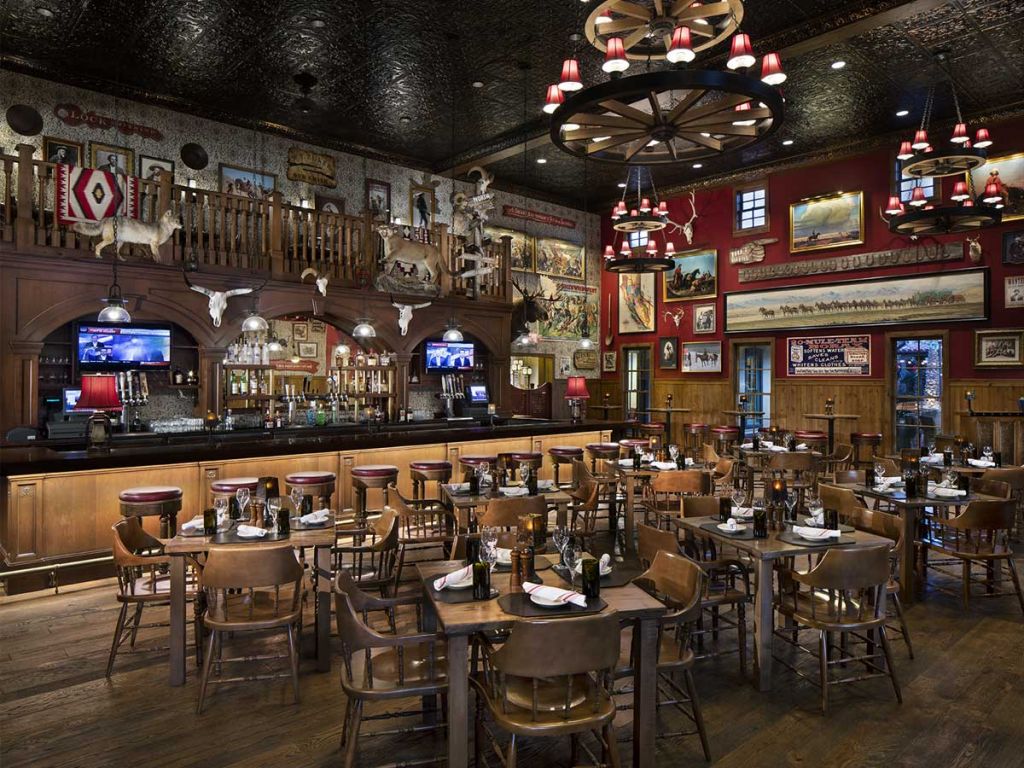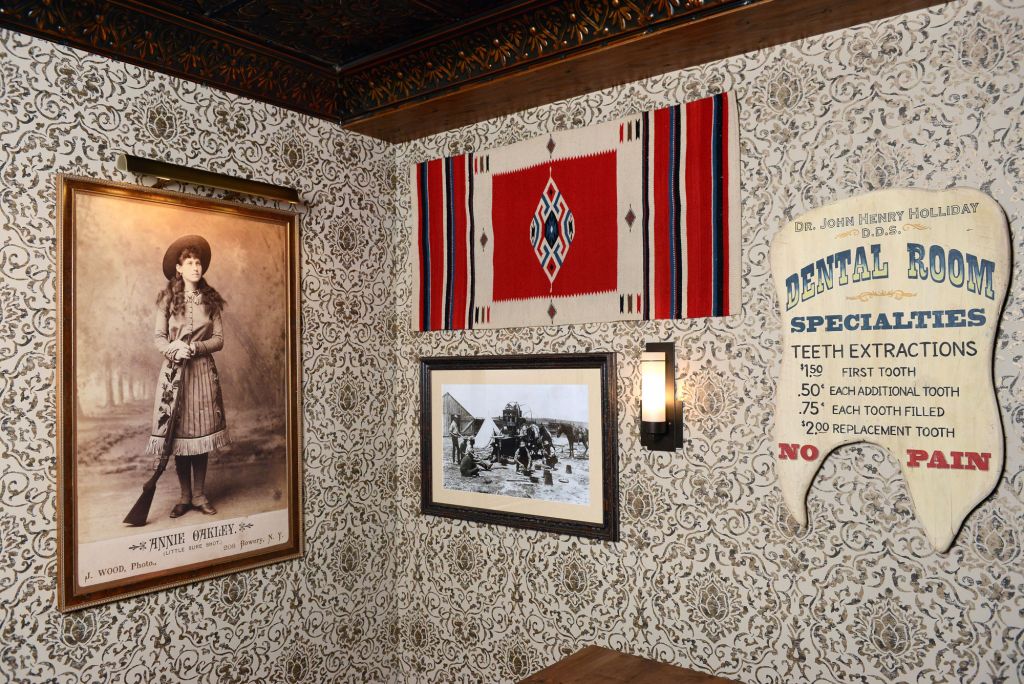Cheers! A Classic Western Bar in Death Valley
With wagon wheel chandeliers and a ceiling made from ornate stamped tin panels, The Last Kind Words Saloon resembles a saloon straight out of a classic Western.
Every desert oasis needs a good watering hole. And The Oasis at Death Valley has a watering hole that rivals the very best bars and restaurants in America’s national parks, The Last Kind Words Saloon.
With wagon wheel chandeliers and a ceiling made from ornate stamped tin panels, The Last Kind Words Saloon resembles a saloon straight out of a classic Western. Walk through the swinging doors and you enter a soaring space where a balustraded wooden staircase leads to a loft that wraps around two sides of the interior. Authentic Navajo rugs and saddles dating to the 1920s hang along the railings, while longhorn skulls peer out from above the bar.

The Last Kind Words Saloon
The saloon’s design emerged from the vision of owner Philip Anschutz, the famed entrepreneur and historian of the West whose holdings include Xanterra Travel Collection®, the parent company of The Oasis at Death Valley. He brought in the Englewood, Colorado, firm of Johnson David Interiors, headed by Cynthia Johnson and her husband David Fritz, which has also worked on The Broadmoor, Anschutz’s landmark Colorado Springs resort.
“He has a very deep passion for the American West. His art collection certainly speaks to that,” says Johnson.
As part of the reinvention of the 224-room The Ranch at Death Valley, Anschutz wanted to create the atmosphere of a classic Western town. And what’s a Western town without a saloon?
“Many people that come here are Europeans who are doing the Grand Canyon and the whole Western circuit,” says Johnson. “He wanted them to have the experience of an Old West saloon. And that was our directive. So that everyone would have a good understanding of what a true, authentic Western saloon felt like.”
With three arched alcoves, two with big screens typically tuned in to sporting events, the large cherry wood bar is The Last Kind Words Saloons’ visual centerpiece and main gathering place. Belly up to the bar, set your cowboy boots along the brass rail, then take your pick of craft beers on tap, small batch American whiskies, and signature cocktails, some featuring that that Old West favorite: sarsaparilla.
Tomahawk Steak, one of the signature dishes
The dinner menu is every bit as Western as the décor. There’s a bison New York strip loin and the Tomahawk, a giant 36-ounce bone-in ribeye. Other entrees incorporate ingredients from the desert, including salmon with prickly pear butter and baby back ribs in a prickly pear barbecue sauce.
The Last Kind Words Saloon gets its name from Larry McMurtry’s 2014 novel about Wyatt Earp and Doc Holliday. You’ll see quotes on the wall from McMurtry, as well as his singer-songwriter son James, although you just might miss their words. That’s because the saloon is so richly decorated.
It’s an absolute visual feast of old maps, signage, historic photographs, and Western artwork, including a painting depicting one of Death Valley’s iconic 20-mule teams hauling borax. While several works come from Anschutz’s art collection, the mule team painting previously hung in the ranch’s Corkscrew Saloon. “When we saw that painting, we told them to absolutely make sure they didn’t throw it away,” says Johnson.

Promotional posters and advertisements appear prominently.
You’ll also see wanted posters and authentic Western apparel, from white riding gloves embroidered with red roses to a pair of flouncy bloomers. In tribute to Death Valley’s long mining tradition, there are gold pans, lanterns, pick axes, and shovels, as well as a set of framed mule shoes. “He wanted the walls full, he wanted them very full,” says Johnson. “Not just full of his paintings and taxidermy, but also to show the history of the Old West.”
From the time Anschutz first outlined his vision, it took three years for the saloon’s décor to come together. Johnson and Fritz found many of the 1,200 items adorning the walls themselves but there were plenty of surprises when crates arrived from Anschutz’s collection.
“When we opened up the crates from the owner, we really didn’t know what we were going to get,” says Johnson. “We had a good idea of what paintings were coming from him but when the crates arrived with the taxidermy, it took about five days to install all of those things on the wall. Even with lifts in there, some of them were not easy to hang. Like the moose (head). It took five guys to hang that. But the team definitely had a whole lot of fun on this project.”
For more travel experiences available from Xanterra Travel Collection® and its affiliated properties, visit xanterra.com/stories.